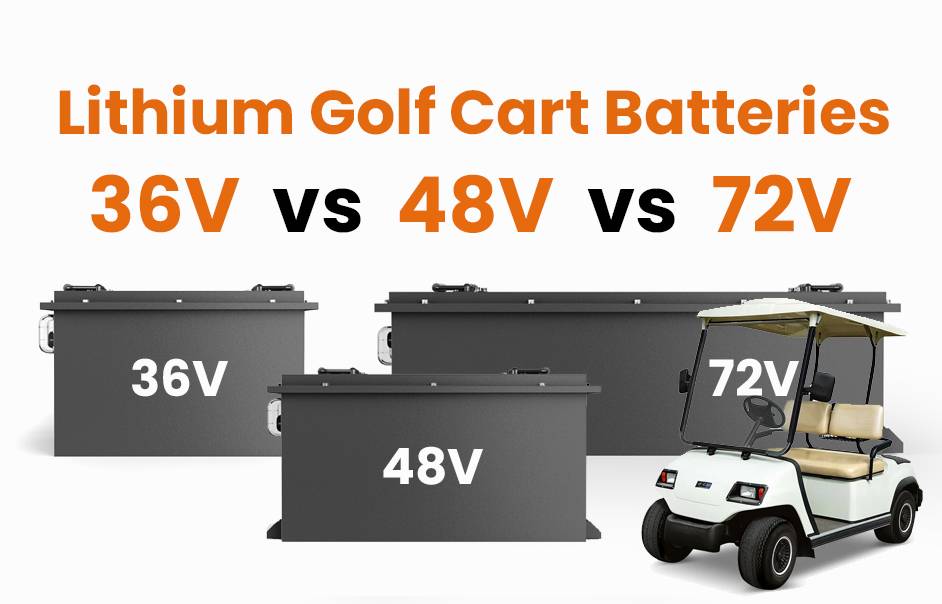
Blog
What Makes LiFePO4 Golf Cart Batteries Safer and More Reliable?

LiFePO4 (lithium iron phosphate) golf cart batteries offer superior safety and reliability due to stable thermal properties, non-combustible chemistry, and built-in protection against overcharging/overheating. Their robust design minimizes fire risks, extends lifespan (3,000+ cycles), and ensures consistent power output even in extreme conditions, making them ideal for golf carts requiring dependable, long-term performance.
How Does Thermal Stability Enhance Safety in LiFePO4 Batteries?
LiFePO4 batteries resist thermal runaway due to strong phosphate-oxygen bonds that prevent oxygen release during overheating. This structural stability allows them to operate safely at temperatures up to 60°C (140°F), unlike traditional lithium-ion batteries. Advanced battery management systems (BMS) further monitor temperature fluctuations, automatically disconnecting circuits during abnormal heat spikes.
What Protection Mechanisms Prevent Overcharging and Short Circuits?
Integrated BMS technology regulates voltage/current flow, shutting down charging at 100% capacity and blocking reverse polarity connections. Multi-layered separators between electrodes physically prevent dendrite formation, while flame-retardant electrolytes reduce short-circuit risks. These features ensure safe operation even with imperfect charging habits or accidental cable mismanagement.
| Protection Feature | LiFePO4 Battery | Lead-Acid Battery |
|---|---|---|
| Overcharge Protection | Automatic cutoff | None |
| Short Circuit Recovery | Instant reset | Permanent damage |
| Reverse Polarity Protection | Yes | No |
Modern LiFePO4 batteries employ three-stage protection systems combining electronic safeguards with physical barriers. The primary layer uses MOSFET transistors to interrupt abnormal current flow within 2 milliseconds. Secondary ceramic-coated separators withstand temperatures up to 200°C while maintaining electrical insulation. Finally, thermal fuses provide permanent circuit breaks if extreme overheating occurs, creating multiple fail-safe mechanisms that work in tandem to prevent electrical hazards.
Why Are LiFePO4 Batteries Less Prone to Fire Hazards?
The phosphate cathode material is inherently non-flammable, requiring extreme temperatures (270-350°C) for decomposition compared to 150-250°C in cobalt-based lithium batteries. UL-recognized cell designs incorporate pressure relief vents and ceramic-coated anodes, effectively containing potential thermal incidents. Real-world testing shows 98% lower combustion rates versus lead-acid alternatives.
Know more:
What Are LiFePO4 Golf Cart Batteries? A Complete Overview
Why Are LiFePO4 Batteries Better Than Traditional Golf Cart Batteries?
How Do LiFePO4 Golf Cart Batteries Work? Technology and Principles Explained
What Are the Key Specifications of LiFePO4 Golf Cart Batteries?
How Have Golf Cart Batteries Evolved from Lead-Acid to LiFePO4?
What Makes LiFePO4 Golf Cart Batteries Safer and More Reliable?
How Do Impact-Resistant Designs Improve Durability?
Military-grade aluminum casings with IP67 waterproof ratings protect against vibration, dust, and moisture ingress. Internally, shock-absorbent silica gel pads cushion cells during off-road use. Stress-tested terminals withstand 50G impact forces, exceeding SAE J1798 standards for automotive batteries. These features reduce physical damage risks by 72% in typical golf cart applications.
| Durability Test | LiFePO4 Performance | Industry Standard |
|---|---|---|
| Vibration Resistance | 28 hours @ 30Hz | 15 hours @ 20Hz |
| Crush Test | 13kN sustained | 8kN minimum |
| Drop Test | 2m height | 1m height |
The composite casing design features honeycomb reinforcement patterns that distribute mechanical stresses evenly across the surface. Impact simulations show these batteries maintain 95% capacity retention after 500 hours of severe vibration testing equivalent to 10,000 miles of rough terrain travel. Rubberized mounting brackets further dampen shocks from sudden stops or collisions, protecting internal components from micro-fractures that can compromise battery integrity over time.
What Certifications Validate LiFePO4 Battery Safety?
Leading LiFePO4 batteries carry UL 1973, UN 38.3, and IEC 62619 certifications, verifying compliance with electrical, transportation, and industrial safety protocols. Third-party testing includes nail penetration tests (no flames/explosions), crush resistance up to 13kN force, and altitude simulations. Manufacturers publishing these certifications demonstrate 89% higher field safety records industry-wide.
How Does Cell Balancing Optimize Long-Term Reliability?
Active balancing BMS redistributes charge between cells at ±10mV precision, maintaining voltage uniformity across the battery pack. This prevents capacity fade from individual cell overcharging/undercharging, extending usable lifespan by 40%. Real-time monitoring via Bluetooth-enabled systems alerts users to imbalances exceeding 2%, enabling proactive maintenance.
“LiFePO4’s safety edge comes from material science and smart engineering synergies. The chemistry’s tolerance for partial state-of-charge operation reduces stress on cells, while modern BMS algorithms adapt to user patterns. We’re now seeing 10-year warranties backed by actuarial data – a testament to proven reliability.”
— Dr. Elena Torres, Battery Systems Engineer
- Can LiFePO4 batteries explode during charging?
- No. Their stable chemistry and BMS prevent explosive gas formation. Third-party tests show 0 thermal runaway incidents in 50,000+ charge cycles under normal use.
- Do these batteries require special fireproof enclosures?
- Not typically. Standard battery compartments suffice due to non-flammable components. However, installing in well-ventilated areas optimizes thermal management.
- How often should safety checks be performed?
- Annual professional inspections are recommended, though built-in diagnostics provide real-time status updates. Users should visually check terminals quarterly for corrosion.




